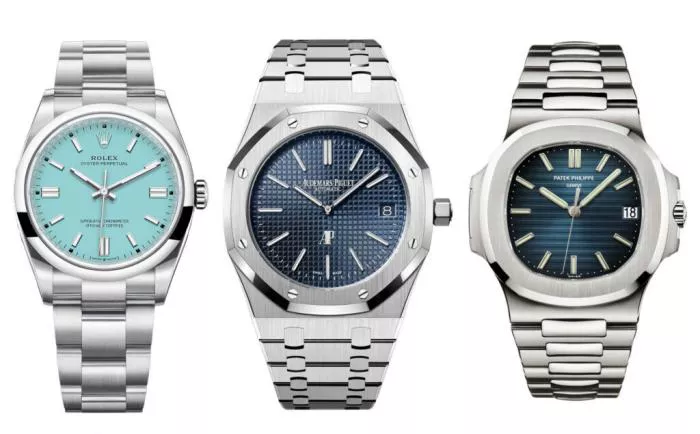In recent years, purchasing a Rolex from an authorized dealer was akin to receiving an instant investment. With the exception of the discontinued Cellini, nearly every men’s Rolex commanded a premium on the secondary market.
Though prices have softened since the 2022 bubble burst, Morgan Stanley and WatchCharts report that the average Rolex still resells for 15% above retail. However, not all models retain value equally.
Rolex: Strong Holders and Declining Performers
The GMT-Master (+40%) and Daytona (+39%) collections drive Rolex’s overall value retention. The Oyster Perpetual (+31%) and Sky-Dweller (+20%) also remain solid investments. Yet five Rolex lines now trade below retail:
- Day-Date (-2%)
- Yacht-Master (-4%)
- Explorer (-5%)
- 1908 Dress Collection (-8%)
- Sea-Dweller (-15%)
The Explorer II and Air-King hover at +4%, but further retail price hikes and secondary market declines could push them into negative territory.
Patek Philippe: Extreme Highs and Lows
Once the leader in value retention, Patek Philippe’s portfolio now averages +13%, slightly behind Rolex. However, disparities between collections are stark:
- Cubitus (+115%)
- Aquanaut (+76%)
- Nautilus (+59%)
Conversely, the Calatrava and Complications lines average -26%, making them long-term holdings rather than quick flips.
Audemars Piguet: Royal Oak Carries the Brand
Audemars Piguet’s overall retention sits at +5.3%, almost entirely due to the Royal Oak (+30%). The Offshore (-17%) and CODE 11.59 (-29%) collections drag down the brand’s performance.
The Bottom Line
While Rolex remains the most consistent, Patek Philippe’s top performers still dominate the ultra-luxury segment. Audemars Piguet’s reliance on the Royal Oak highlights its vulnerability to market shifts. For investors, choosing the right model—not just the right brand—is critical.
Related topics:
- 8 Things You Should Know About The 2025 Rolex Release
- What’s new from Rolex in 2025?
- Rolex gambles on opening in Middle East’s first casino resort hotel


